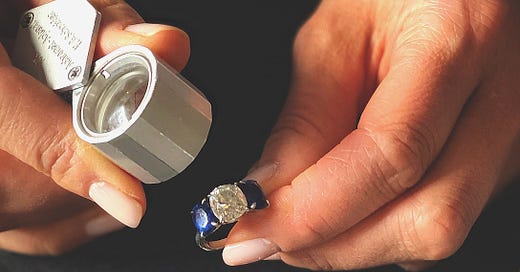Selling jewelry can feel like navigating a maze. With so many options—from online resale sites to neighborhood pawn brokers, auctions, and retail buybacks—it’s easy to feel overwhelmed. The jewelry industry is notoriously insular, and while information is available, it often comes from so many different sources that it’s hard to know what to trust. Misi…
Keep reading with a 7-day free trial
Subscribe to Vejeweled to keep reading this post and get 7 days of free access to the full post archives.



